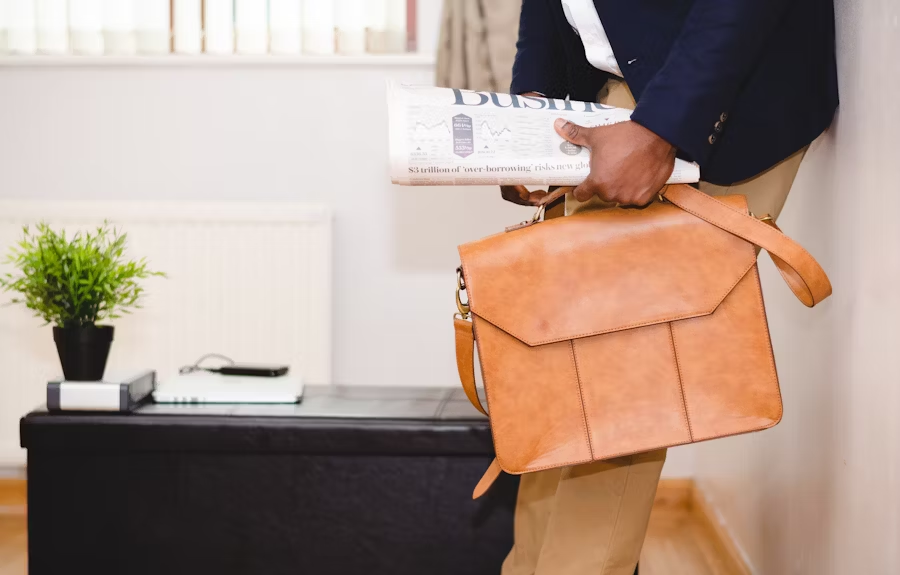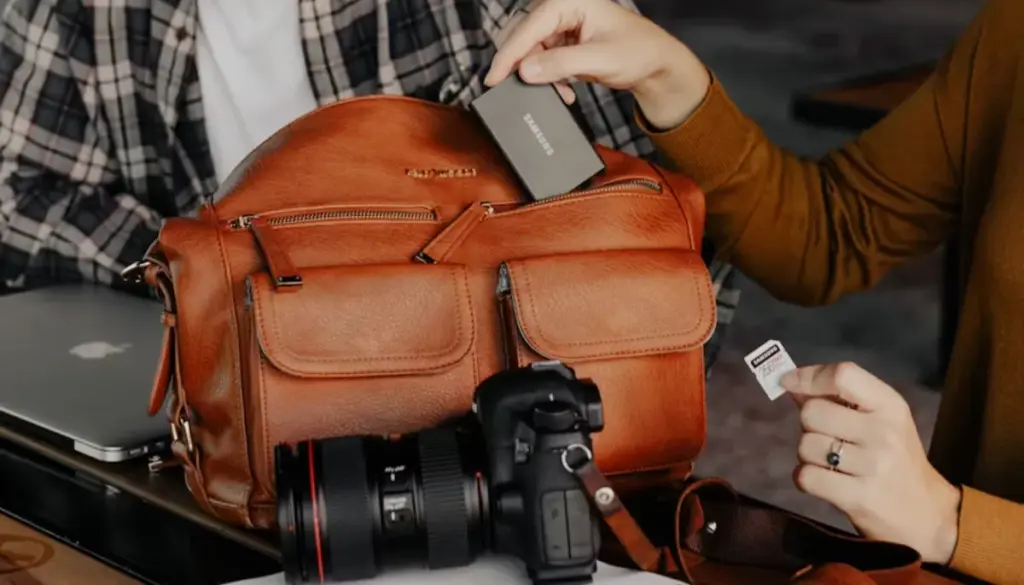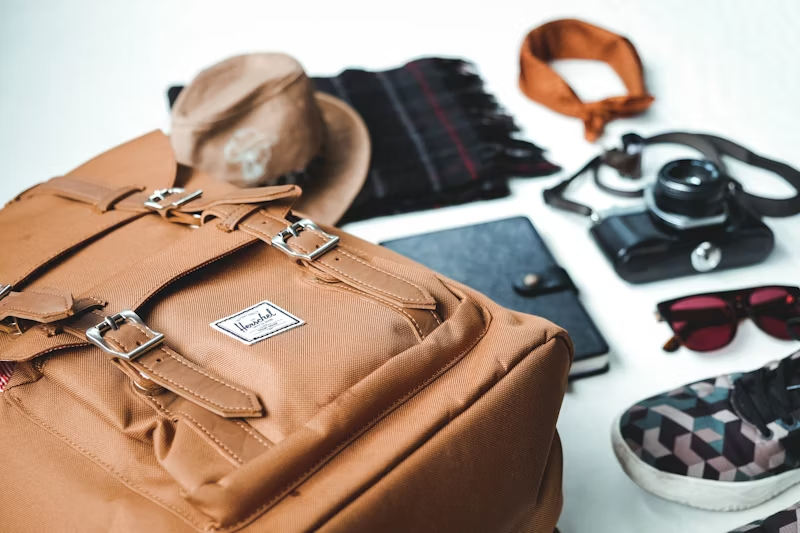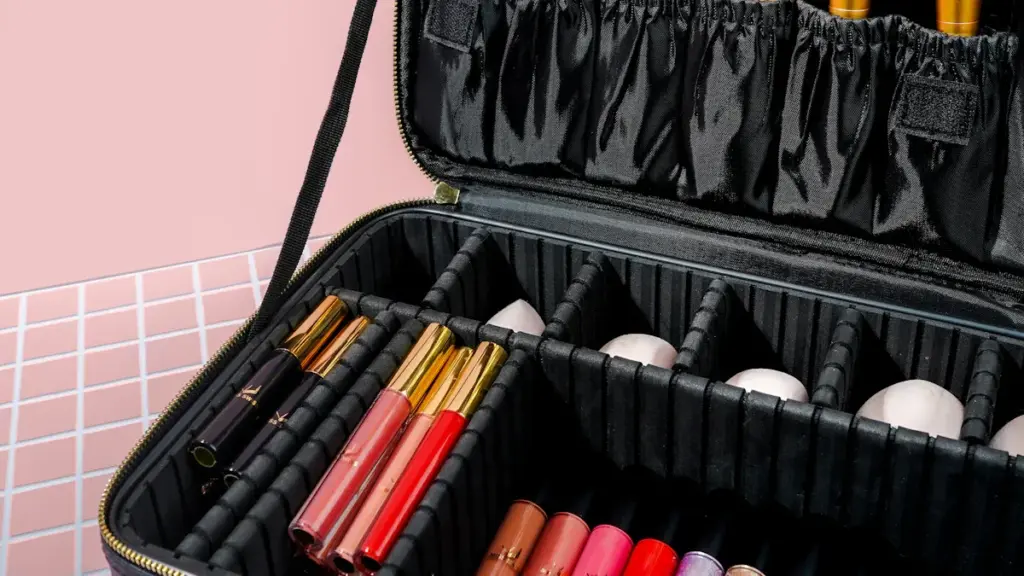When you’re sourcing makeup bags for your business, you can’t afford surprises in quality or compliance. In this article, we share the five quality-control steps we follow in our own production process to ensure every makeup bag meets strict durability, safety, and compliance standards, so you can source with confidence and build stronger customer trust.
Step 1: Material Quality Check
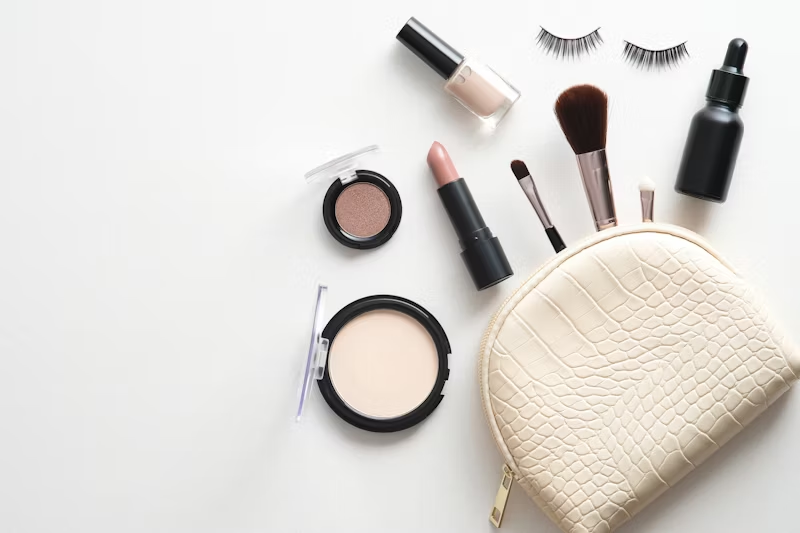
Fabric and Leather Selection
Before production begins, we carefully inspect each batch of fabric and leather used for our makeup bags. Under standardized lighting, our team checks color consistency so every batch matches perfectly. They pull, stretch, and feel the materials to detect pilling, wrinkles, or blemishes early. About 5–10% of raw materials are rejected at this stage, ensuring only flawless components move into production. Here are four key checkpoints we mainly focus on:
- Color Consistency: Check every roll under standardized lighting to confirm even color and document any variation for traceability.
- Texture Quality: Examine leather for smooth grain and test synthetic fabrics to ensure a clean, pill-free surface.
- Defect Detection: Use bright, controlled lighting and tactile checks to identify imperfections early.
- Material Rejection: Mark, quarantine, and report any nonconforming batches to suppliers for replacement or corrective action.
Performance Testing
We conduct targeted performance tests on incoming materials to verify functional strength, tear resistance, and water repellency. For instance, our team confirms that nylon panels can withstand at least 20 pounds of pull and that waterproof coatings resist leaks under pressure. These tests ensure each bag performs reliably in real-world use. All results are logged in our incoming-quality-control report for full traceability.
Rejecting Substandard Materials
When materials fail inspection, our sourcing team notifies suppliers within 24 hours and requests corrective action. We reject weak zipper panels or unevenly dyed leather before production begins to avoid costly rework. Although early rejection adds upfront cost, it prevents defects, reduces waste, and safeguards our brand reputation.
Step 2: Stitching and Construction Review
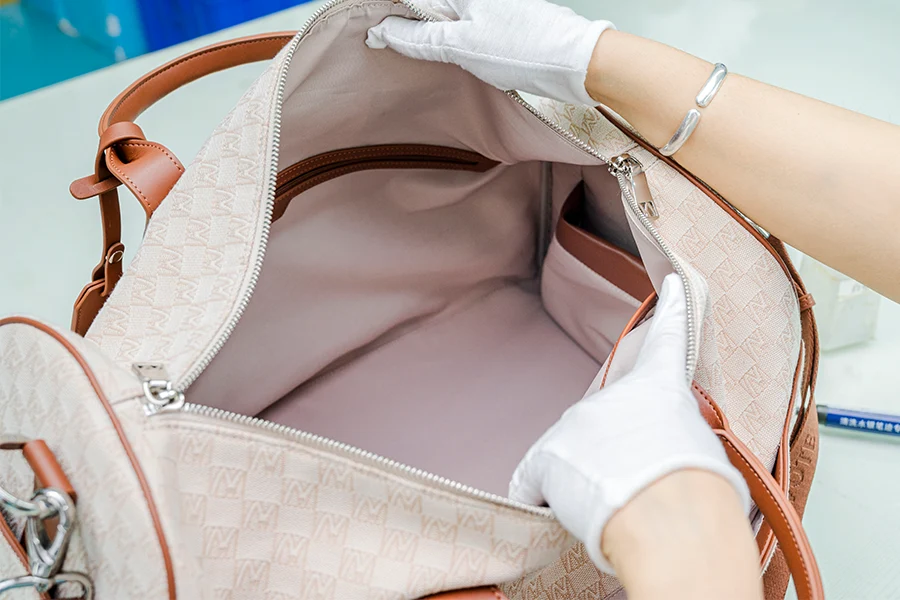
After materials pass inspection, we move seamlessly into evaluating stitching and construction, knowing these details determine both durability and appearance.
Thread Quality and Alignment
We give thread the same priority as fabric. Our team verifies that only high-strength polyester or nylon in matching colors is used. As we review each seam, we look for straight, even alignment and perform pull tests on samples to be sure they won’t fray or snap. Addressing potential weak points at this stage keeps problems out of the final product.
Seam Integrity
We then measure stitch length and tension to maintain consistent strength and a clean finish. Extra attention goes to critical areas such as handles and structural panels, where we check for a steady pattern of roughly 10–12 stitches per inch. This consistency prevents premature wear and preserves the bag’s look.
Reinforcement of Stress Points
Finally, we focus on high-stress areas like handles, edges, and corners. Our team confirms that reinforcement techniques such as bar-tacking are correctly applied and firmly secured. With these reinforcements in place, each bag is prepared to withstand frequent use while maintaining its quality and shape.
Step 3: Surface and Detail Inspection
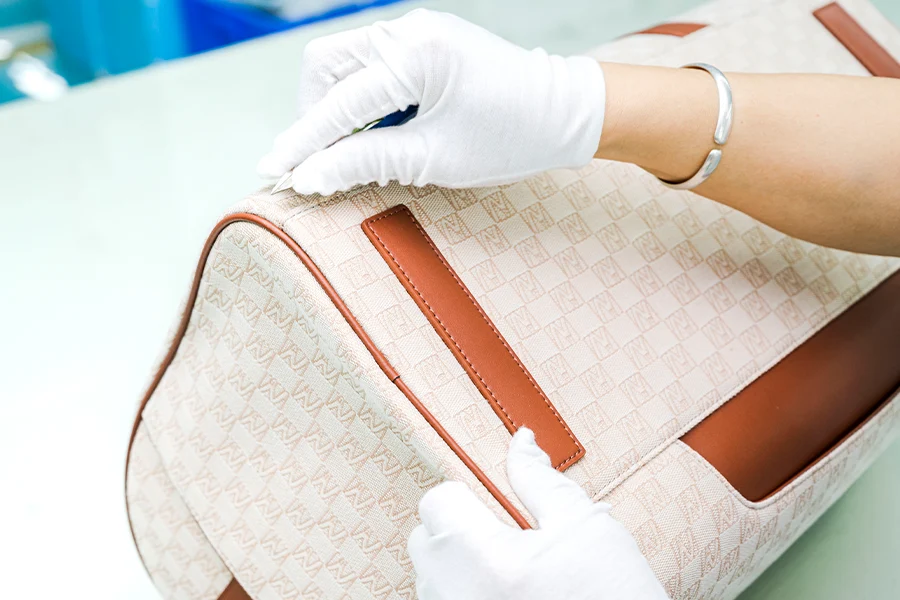
Even a well-constructed bag can fall short if its surface or branding details are inconsistent. At this stage, we carefully review each bag to ensure it meets both visual and aesthetic standards, because even minor flaws can affect perception and damage brand reputation.
Identifying Surface Flaws
Our team inspects every panel for visible defects that could reduce perceived value or customer satisfaction. We focus on:
- Stains and Scratches: Check each panel closely, noting even subtle scratches or smudges on textured or metallic surfaces.
- Uneven Dyeing: Compare color across panels and batches under standardized lighting.
- Inspection Tools: Use light boxes or magnifying lenses to catch flaws invisible under normal lighting.
Thorough surface checks ensure each bag maintains a professional appearance and meets buyer expectations.
Logo and Branding Accuracy
Branding communicates quality and authenticity. We verify that logos and other brand details are correct, as misalignment or blur can harm the product’s professional image. Our checks include:
- Embossing or Printing: Confirm clarity and proper alignment on every unit.
- Metal Brand Plates: Check placement, polish, and secure attachment.
- Consistency Across Units: Ensure all bags in a batch meet the same standard.
Accurate branding reassures customers and strengthens trust in our products.
Ensuring Visual Consistency
Maintaining uniformity across all units is essential, particularly in batch production. Our team focuses on:
- Color Matching: Compare every unit to reference samples for color, shine, and texture.
- Logo Placement: Confirm positioning within 2–3 mm of approved standards.
- Reference Comparisons: Regularly compare new units to approved samples to ensure consistency.
By carefully managing surface quality and branding, we guarantee that every bag meets professional standards and upholds our brand reputation.
Step 4: Function Testing
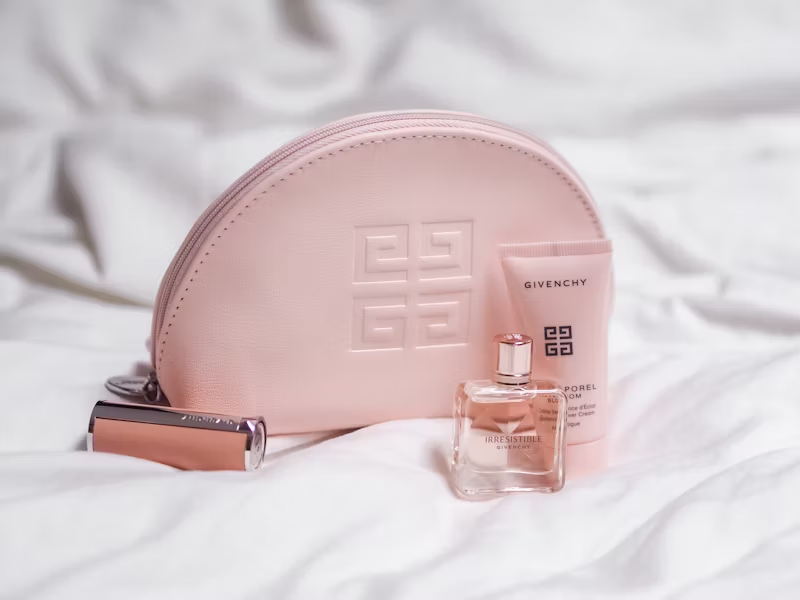
Functionality is critical for any makeup bag, which is opened, closed, and carried frequently. At this stage, we ensure that each bag we produce can withstand real-world use. By following a standardized manufacturing process, our team achieves consistent results and guarantees that every bag meets strict durability and functionality standards.
Zipper and Hardware Performance
Zippers, handles, and straps are essential components. We test them together to confirm overall hardware reliability, knowing that even minor failures can affect both performance and customer satisfaction.
- Zipper Smoothness and Alignment: Inspect zippers to ensure they open and close smoothly, with teeth perfectly aligned. Pull tests verify they withstand at least 10 pounds of force.
- Handles and Straps Load-Bearing: Test straps and handles to confirm they support two to three times the bag’s intended load without fraying, twisting, or detaching.
- Overall Hardware Durability: Reinforce stress points, especially where handles meet the bag, to prevent early wear.
Testing zippers and straps together ensures each bag functions reliably under everyday use. These tests are especially important for bags in our travel bag series, which face frequent handling and transport.
Repeated Use Simulation
To replicate long-term use, we conduct repeated open-close cycles, carry weighted loads, and apply minor impacts. These simulations allow our team to spot potential weaknesses before bags reach customers, confirming that every unit can withstand frequent handling and maintain quality.
Step 5: Final Compliance
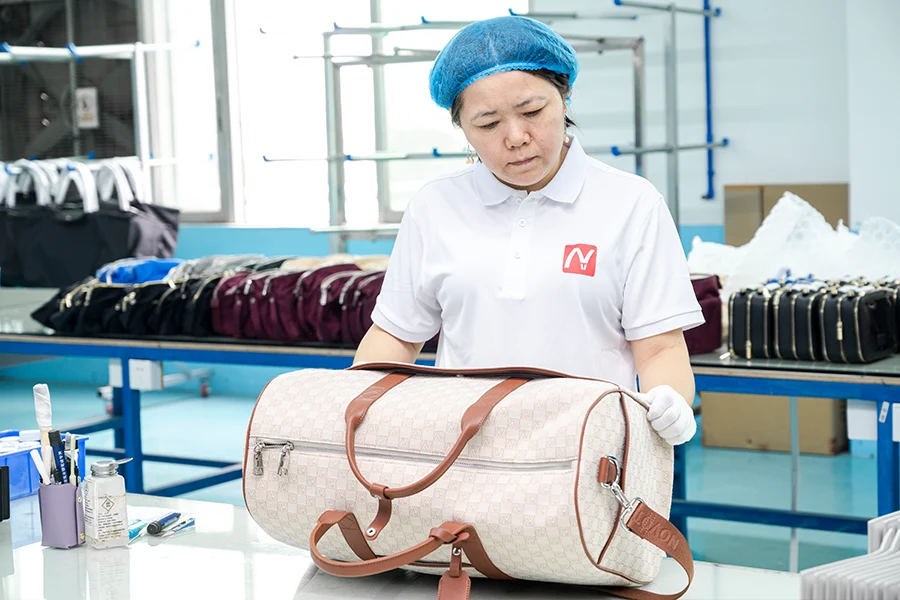
Before shipping, we make sure each product meets our quality standards. This step combines batch sampling, compliance checks, and secure packaging to guarantee consistent quality and customer satisfaction.
Random Batch Sampling
We perform random batch sampling to catch defects before bags leave the factory, protecting quality and brand reputation. This process also helps us identify recurring issues early so the production team can make timely adjustments.
- Sample Size: Inspect 5–10% of each batch.
- Selection Method: Randomly choose units from different production lines or sections.
- Follow-Up: Immediately inspect the full batch if any defects are found.
International Standard Verification
We verify that every bag complies with relevant market and legal requirements, reducing the risk of rejection or returns and demonstrating professionalism to buyers.
- Chemical Safety: Check adherence to REACH, CPSIA, or other applicable regulations.
- Quality Certifications: Confirm ISO 9001 or equivalent standards.
- Documentation: Keep detailed inspection records for audits or buyer verification.
Secure Packaging and Delivery
Proper packaging protects bags during transit and maintains product integrity. Our team ensures careful handling to minimize damage, directly supporting customer satisfaction and repeat orders.
- Protective Materials: Use bubble wrap, cardboard inserts, or custom pouches.
- Labeling: Ensure labels meet destination requirements.
- Handling: Train staff to prevent damage, which can reduce transit issues by 60–70%.
Final Thoughts
Ensuring top-quality makeup bags means careful attention to every production step. At Novotebag, our expertise in makeup bag manufacturing and strict quality inspection ensures each bag inspires confidence and satisfaction.
Whether you’re sourcing for retail or distribution, working with us means dependable quality, standout style, and consistent excellence. Let’s build products your customers will love—reach out today and see how we can elevate your lineup.














